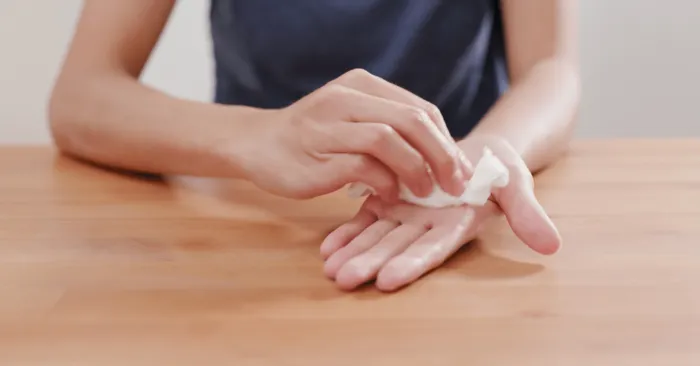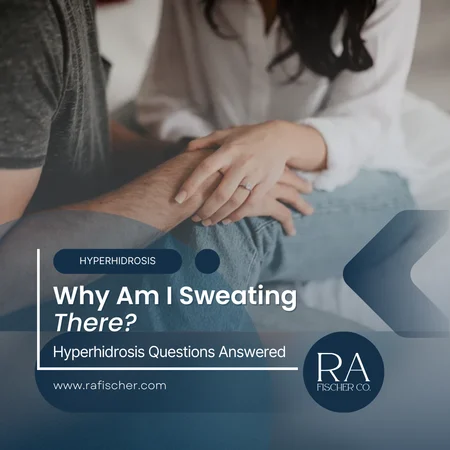March 31, 2017
Why Am I Sweating THERE? And Other Important Questions About Excessive Sweating
Hyperhidrosis Explained: Why Am I Sweating “THERE”?
In this article, we’ll answer essential questions about hyperhidrosis, its symptoms, diagnostic methods, and effective treatments like iontophoresis.
What Are the Different Types of Hyperhidrosis?
Primary Focal Hyperhidrosis
- Definition: Primary focal hyperhidrosis is a chronic condition that causes sweating in specific body areas, such as the hands, feet, underarms, and face.
- Characteristics: It typically appears symmetrically, meaning it affects both sides of the body equally (e.g., both hands or both feet).
- Onset: Symptoms often begin during childhood or adolescence without any identifiable cause.
Secondary Generalized Hyperhidrosis
- Definition: This form of hyperhidrosis results from another medical condition or is a side effect of certain medications.
- Areas Affected: Sweating occurs over larger areas of the body and can happen during sleep.
- Common Causes: Medical conditions like diabetes, menopause, hyperthyroidism, or side effects of medications can trigger secondary hyperhidrosis.
What Are the Symptoms of Hyperhidrosis?

- Sweaty Hands (Palmar Hyperhidrosis): Persistent sweating that makes it difficult to grip objects, shake hands, or write.
- Sweaty Feet (Plantar Hyperhidrosis): Excessive moisture leading to slippery feet, odors, and discomfort in shoes.
- Underarm Sweating (Axillary Hyperhidrosis): Sweat patches that soak through clothing, leading to embarrassment.
- Facial Sweating: Excessive sweating on the forehead, cheeks, and scalp.
- Sweating in Intimate Areas: In some cases, sweating occurs in the groin, inner thighs, or pubic region, which can be particularly distressing.
How Do I Know If I Have Hyperhidrosis?
- Starch-Iodine Test: A special iodine solution is applied to the skin, and starch is sprinkled on top. Areas of excessive sweating will turn dark.
- Paper Test: Special absorbent paper measures the amount of sweat produced over a specific time.
- Laboratory Testing: Blood or urine tests help identify underlying causes in cases of secondary hyperhidrosis.
What Are the Best Treatments for Hyperhidrosis?
1. Topical Treatments
- Prescription Antiperspirants: Products containing aluminum chloride block sweat glands to reduce sweating.
2. Oral Medications
- Medications like anticholinergics reduce sweat production by interfering with nerve signals.
3. Botox Injections
- Botox temporarily blocks the nerves that stimulate sweat glands, reducing sweating for several months.
4. Iontophoresis
- Iontophoresis is a non-invasive, proven treatment for hyperhidrosis, particularly for the hands, feet, and underarms.
More about the Fischer
- Effectiveness: The Fischer boasts a 91-98% success rate in reducing sweat.
- Convenience: Treatments with The Fischer can be done at home, saving time and money compared to clinical alternatives.
- Safety: The Fischer is FDA-cleared and safe for long-term use.
Where Can I Find Support and Resources for Hyperhidrosis?
- The International Hyperhidrosis Society (IHHS): Offers resources on treatments, insurance coverage, and the latest research.
- Hyperhidrosis Support Group 💧 Excessive Sweating - Hyperhidrosis Treatment (Facebook Group): Provides forums where individuals can share stories, advice, and support.
Confidence is within reach

THE FISCHER
Reach out today
Contact one of our Treatment Specialists today to answer any and all of your questions about the Fischer.
FAQs: Important Questions About Hyperhidrosis
Can hyperhidrosis affect the groin area?
Yes, hyperhidrosis can affect the groin, inner thighs, and pubic area. This is less common but still treatable.
What is iontophoresis, and how does it work?
Iontophoresis uses mild electrical currents and the minerals in tap water to block sweat glands temporarily, reducing excessive sweating in the hands, feet, and underarms.
Is hyperhidrosis dangerous to my health?
Hyperhidrosis is not life-threatening, but it can significantly impact quality of life. Managing it with proven treatments like The Fischer iontophoresis device can restore confidence and comfort.
Can I treat hyperhidrosis at home?
Yes, at-home treatments like The Fischer iontophoresis device allow you to manage hyperhidrosis conveniently and effectively.
What’s the difference between primary and secondary hyperhidrosis?
Primary hyperhidrosis occurs without a medical cause, while secondary hyperhidrosis is triggered by an underlying medical condition or medication.
